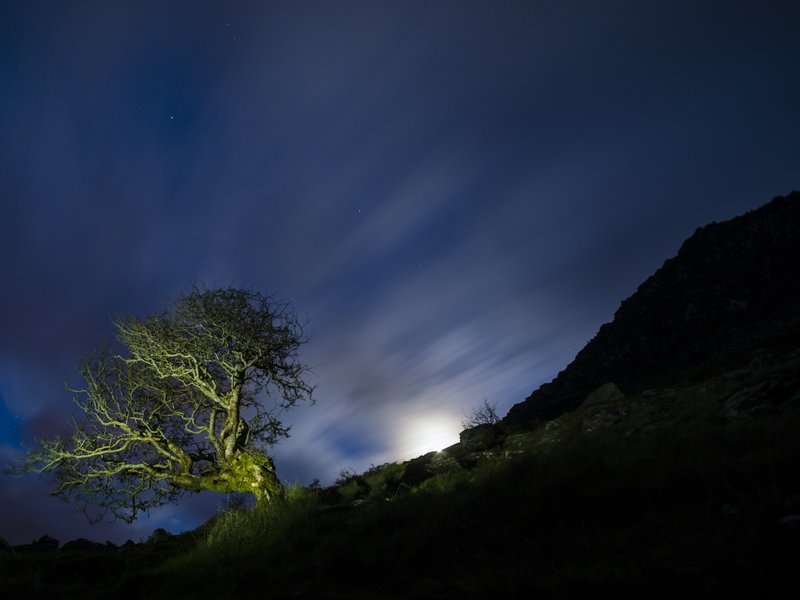The gravitational pull of the moon may affect more than just the rise and fall of the oceans; scientists believe plants respond too. Through observation, they’ve noticed some plants’ leaves wave up and down at night, and this “leaftide” seems to correspond with gravitational changes.
One researcher calls it the "leaftide"

Tree in moonlight - A hawthorn tree in the moonlight (Robert Canis/Frank Lane Picture Library/Corbis)
By Marissa Fessenden
Reference: smithsonian.com
August 19, 2015
Plants typically move too slowly or too subtly for the unaided human eye to appreciate. Instead, we rely on time-lapse photography to reveal their waving branches, unfurling tendrils and grasping vines. But most of those movements are solely initiated by the plants themselves. Now at least one scientist thinks there is an outside influence tugging on the Earth’s vegetation.
The gravitational pull of the Moon doesn’t just cause the ocean to rise and fall, plants wave their leaves in response to the Moon, reports Jacob Aron for New Scientist. Peter Barlow of the University of Bristol, U.K., decided to investigate why some plants’ leaves wave up and down even when they grow at night (many day-growing plants have a similar dance in response to light levels, see these tomato seedlings nodding and bowing as they stretch taller).
Barlow looked at data about bean plants from1920s to today and matched leave movements with estimates of the local gravitational pull of the Moon at the time. The motions corresponded well with the gravitational changes, he reports in Annals of Botany. Furthermore, plants on the International Space Station showed a 90-minute cycle that lined up with the 90-minute orbit and changing position relative to the Moon.
Aron writes that the movement of water within the plant might be responsible:
Ocean tides are produced by a combination of the sun and moon’s gravity and Earth’s rotation, creating bulges of water on opposite sides of the planet. For plants, Barlow says water movement in the pulvinus, the “joint” where leaf meets stem, could be responsible.
Other researchers point out that the influences of temperature changes and plants' own internal circadian clock may actually overpower any minute tugs on plants’ water. However, the possibility that Earth experiences a "leaftide" is just romantic enough for us to wish for it to be true.
Repost of Article - Source: http://www.smithsonianmag.com/ist/?next=/smart-news/plants-move-moon-just-oceans-do-tides-180956311/
|


![]()

